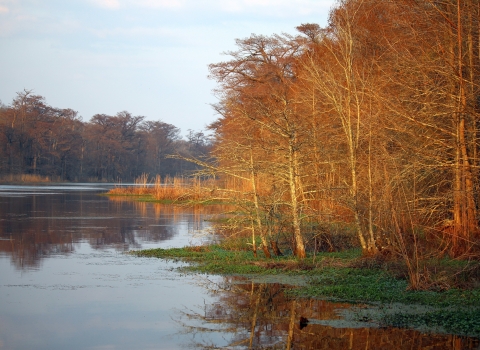The grotto sculpin is a rare, endangered cave-dwelling fish unique to five cave systems in Perry County, Missouri. Today, we at the U.S. Fish and Wildlife Service are announcing a draft plan to save this unique fish and opening a 60-day public comment period. Saving this species will depend on cooperation among private, local, state and federal partners.
The public is invited to provide comment on the draft plan through January 29, 2024.
The grotto sculpin is a small fish, measuring less than 5 inches long. This species is found in just five cave systems in Perry County, Missouri. These fish complete a seasonal migration from underground streams to surface streams in the area. Typical of many cave-dwelling species, it is nearly blind and pale-colored. Since the species has such a small range, population-scale fish kills are of particular concern and can occur when contaminants from the surface wash into the cave streams that the grotto sculpin call home.
Listed as endangered in 2013, the most substantial threats to grotto sculpin come from present or threatened destruction, modification or curtailment of its habitat, including water quality degradation. The draft recovery plan focuses on protecting the species and enhancing their habitat by managing human access to cave systems, managing surface habitat around the caves and monitoring water quality. The plan also focuses on protecting and enhancing habitat around sinkholes and learning more about the threats to the species.
We are proud to work with Perry County to protect this ecosystem that is home to remarkable cave species like the grotto sculpin. Partnerships have been critical in preventing species decline and provide a solid foundation for recovery actions. Because these fish are sensitive to water quality, the presence of grotto sculpin within the cave systems is a sign that water entering from aboveground is being properly managed for contaminants and is likely to positively impact not only on other cave-dwelling species but also Perry County residents that rely on streams in the area for recreation, business purposes and household use.
Recovery planning is one step in a process to address threats to endangered and threatened species. Plans provide a road map for private, Tribal, federal and state cooperation in conserving listed species and their ecosystems. While a recovery plan provides guidance on how best to help listed species achieve recovery, it is not a regulatory document. You are invited to provide input as the plan is developed and once a recovery plan is finalized, recovery partners will outline specific actions to carry out the plan.
Learn more about the draft recovery plan and how to comment.



